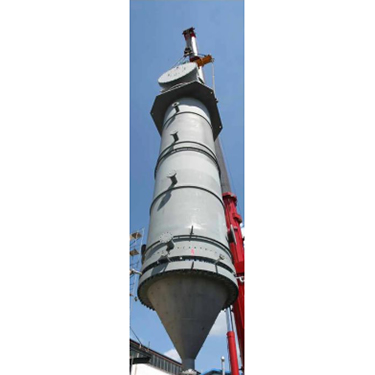High - efficiency Industrial Wastewater Treatment Equipment: Technical Analysis and Application Guide for Wastewater Evaporators
Release time:2025-10-01
Visits:72
In the field of industrial wastewater treatment, wastewater evaporators, as the core technological equipment for dealing with high - salinity and high - COD wastewater, have become key equipment in highly polluting industries such as chemical engineering, pharmaceuticals, and food processing, thanks to their diverse process forms and remarkable environmental benefits. This equipment achieves the goals of wastewater volume reduction, resource utilization, and up - to - standard discharge through evaporation concentration and crystallization separation.
I. Core Technologies and Process Forms
Wastewater evaporators mainly include processes such as triple - effect evaporators, falling - film evaporation, forced - circulation evaporation, and low - temperature evaporation. Among them, the triple - effect evaporation system is widely used due to its high energy - efficiency. This system consists of three sets of series - connected evaporators, condensers, and salt separators. When treating wastewater with a salt content of 3.5% - 25% and a COD concentration of 2000 - 10000 ppm, the energy utilization rate can be increased to more than three times that of traditional single - effect evaporators.
During the operation of the triple - effect evaporator, the wastewater first enters the first - effect forced - circulation crystallization evaporator. After being heated to a superheated state by external steam, it enters the flash - evaporation stage. The secondary steam generated in the first effect serves as the heat source for the second - effect evaporator, and so on, realizing the cascade utilization of waste heat. Finally, the supersaturated wastewater in the last effect precipitates crystalline salts. The desalinated water after separation can be reused or discharged up to the standard, and the salts are recycled through a centrifugal dehydration device.
II. Full - process Treatment Efficiency
1. Pretreatment and Feeding Stage: In the continuous feeding mode, the wastewater is pumped into the evaporation system after pretreatment such as pH adjustment and filtration.
2. Thermal Energy Conversion Stage: In each effect evaporation chamber, the boiling point is gradually reduced through pressure - difference control, enabling low - temperature evaporation (the temperature of the last effect can be as low as 40°C), thus reducing thermal energy loss.
3. Crystallization and Separation Stage: The concentrated liquid stays in the crystallization evaporation chamber for crystallization. With the help of scrapers or centrifugal devices, solid - liquid separation is completed, and the purity of the salts can reach over 95%.
III. Typical Application Scenarios and Selection References
- Chemical Environmental Protection Field: Treating refractory high - salt wastewater such as coal - chemical wastewater and pesticide wastewater to meet the "zero - discharge" requirement.
- Food and Beverage Industry: Concentrating fruit juices and dairy extracts (e.g., from 12°Brix to 70°Brix). Low - temperature evaporation preserves flavor substances.
- Electronic Electroplating Industry: Recycling precious - metal electroplating solutions to reduce the risk of heavy - metal pollution.
- Pharmaceutical Manufacturing Field: Treating high - organic - matter wastewater such as antibiotic fermentation broth and simultaneously recovering active ingredients.
IV. Core Advantages and Economic Benefits of the Equipment
1. Energy Saving and Consumption Reduction: The steam consumption of the triple - effect evaporator is 65% less than that of the single - effect system, and the operating cost is reduced by 40% - 50%.
2. Automated Operation: The integrated PLC control system enables intelligent adjustment of pressure, temperature, and flow, supporting 24 - hour continuous operation.
3. Material Adaptability: The evaporation chamber can be customized with titanium, Hastelloy, or graphite according to the corrosiveness of the wastewater, extending the equipment's service life to over 15 years.
4. Resource Output: The crystalline salts can be directly sold or reused in the process, and the reuse rate of desalinated water exceeds 80%, significantly reducing the enterprise's water intake cost.
V. Industry Development Trends
With the tightening of environmental protection regulations and the increasing demand for resource recycling, wastewater evaporators are developing towards multi - effect combination (four to six effects) and coupling with MVR mechanical vapor recompression technology. The new evaporation system can further reduce energy consumption by 30% through waste - heat recovery and shows greater potential in complex scenarios such as treating high - boiling - point organic - matter wastewater and radioactive wastewater.
In conclusion,
wastewater evaporators have become the core solution for in - depth industrial wastewater treatment due to their mature technological path and remarkable environmental and economic benefits. When selecting equipment, enterprises need to combine the characteristics of the wastewater (such as salt composition and organic - matter content), production capacity, and environmental protection standards to choose a suitable evaporation process combination to maximize the balance between environmental benefits and operating costs.

